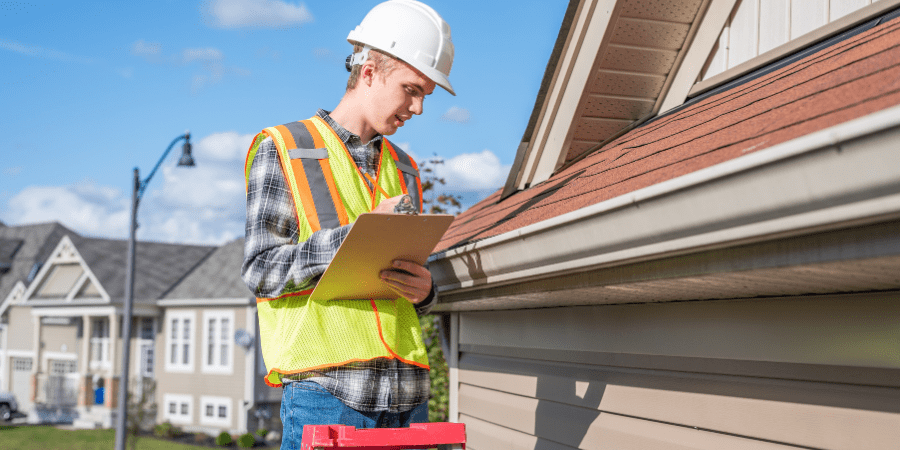Failing a REAC (Real Estate Assessment Center) inspection can lead to serious consequences for property owners and managers, affecting both finances and operations. NSPIRE Experts is here to help property professionals navigate the REAC inspection process and avoid the pitfalls of failing an inspection. In this guide, we’ll explain what happens after a failed REAC inspection, the reasons inspections fail, how to address issues, and proactive steps for ongoing compliance.
What is a REAC Inspection?
The U.S. Department of Housing and Urban Development (HUD) conducts REAC inspections to assess HUD-subsidized properties’ condition, safety, and cleanliness. Scoring focuses on structural conditions, maintenance, safety, and environmental quality, ensuring safe, livable spaces for tenants.
Failing a REAC inspection means that property conditions fell below minimum standards, often requiring follow-up actions and possible penalties. NSPIRE Experts specializes in helping property owners pass inspections and maintain compliance to avoid these challenges.
Scoring Criteria for REAC Inspections
The REAC scoring system evaluates a property’s various areas, from exterior conditions to internal facilities like electrical systems, plumbing, and fire safety measures. Scores range from 0 to 100, with a failing score typically below 60. Areas prioritized during the inspection include:
- Health and Safety: Presence of hazards, such as mold or tripping hazards
- Cleanliness and Maintenance: Regular upkeep, including pest control and waste management
- Structural Integrity: Assessing roof, walls, and foundation conditions
Properties that pass are scheduled for regular inspections, while properties scoring below standards often face frequent re-evaluation until improvements meet HUD’s expectations.
Consequences of Failing a REAC Inspection
Immediate Repercussions:
A failed REAC inspection can lead to a host of financial and regulatory penalties. In many cases, HUD may impose fines to encourage immediate compliance and may require the property to undergo re-inspections to verify corrective actions. Property owners could also face repair costs, especially if deferred maintenance caused the failure.
Long-Term Consequences:
Ongoing compliance issues may jeopardize HUD funding, subsidies, or rental assistance, affecting the property’s financial viability. Failing REAC inspections consistently could lead to revocation of certifications or accreditation, with some cases requiring HUD intervention or even a property takeover to ensure tenant safety.
Impact on Tenants:
Failing an inspection affects more than just the owner; tenants also feel the impact. Poor housing conditions can lower tenant satisfaction, leading to high turnover. In severe cases where HUD issues an abatement, tenants may face relocation or even eviction.
Common Reasons for Failing a REAC Inspection

Several issues can lead to a failed REAC inspection, and many are preventable with routine upkeep. NSPIRE Experts advise property owners to stay vigilant in addressing these areas:
- Health and Safety Violations: Issues like mold, exposed wiring, water damage, and pest infestations frequently lead to violations.
- Structural Concerns: Foundation cracks, poor roofing, and damaged walls are red flags in any inspection.
- Lack of Maintenance Documentation: Missing or incomplete records can negatively affect scores and make it difficult to track compliance.
Steps to Take After a Failed REAC Inspection
If you’ve failed a REAC inspection, there are several steps you can take to bring your property back into compliance. NSPIRE Experts recommend the following actions:
1. Address Immediate Violations: Prioritize health and safety violations, as these often carry the most severe penalties. Engaging qualified professionals to handle repairs quickly ensures that issues are resolved thoroughly and up to code.
2. Develop a Compliance Plan: A corrective action plan helps address specific violations, setting a structured timeline for repairs. If your inspection failure resulted in HUD’s involvement, NSPIRE Experts can guide you through the compliance process, ensuring that follow-up inspections validate your improvements.
3. Schedule Re-Inspections: Re-inspections are common for failed properties, providing an opportunity to confirm that all violations have been rectified. HUD may require multiple follow-up inspections until standards are met, so keep your property ready at all times.
Tips to Avoid Failing a REAC Inspection
The best way to avoid REAC failures is to maintain compliance proactively. NSPIRE Experts offer some practical tips:
- Regular Self-Inspections: Regular self-assessments between REAC inspections can prevent surprise violations. Check for potential hazards, worn-out equipment, and cleanliness in both tenant units and common areas.
- Training Staff and Mock Inspections: Educate your team on REAC standards, from health and safety guidelines to minor details that can impact scores. Conducting mock inspections helps teams anticipate real inspection criteria.
- Document Maintenance Rigorously: Record all maintenance activities and repairs, as HUD considers thorough documentation essential for compliance. Organized records also make inspections smoother and demonstrate diligence.
Click here to learn more about What happens if a property fails a HUD Inspection.
Financial and Legal Support Options
For properties requiring major updates, HUD offers grant programs that help subsidized properties fund essential repairs and improve tenant living conditions. If your property fails multiple REAC inspections and HUD takes compliance action, legal guidance from NSPIRE Experts can help you navigate the appeals process.
Points To Remember For Failing A REAC Inspection
- Failing an inspection can lead to fines, mandatory follow-ups, and funding cuts.
- Addressing health and safety issues immediately minimizes further penalties.
- Document all maintenance and repairs for a smoother compliance process.
- Routine self-inspections and training can prevent inspection failures.
- Seeking professional guidance from NSPIRE Experts ensures HUD compliance.
FAQs: Failing a REAC Inspection
1. What should property owners do immediately after failing a REAC inspection?
- Begin by addressing critical health and safety violations immediately. A quick response helps avoid further penalties and shows commitment to tenant safety.
2. Can property owners appeal REAC inspection penalties?
- Yes, if you believe the inspection outcome was unfair, you can file an appeal with HUD. Consulting NSPIRE Experts can help strengthen your case.
3. How often can HUD conduct REAC inspections for failed properties?
- HUD can conduct frequent inspections for properties with ongoing violations, sometimes as often as every 6 months, to ensure compliance.
4. Do tenants know if a property fails a REAC inspection?
- Tenants are not automatically notified, but HUD’s actions may impact them, such as if the property requires relocation or improvements.
5. What documentation is required during a re-inspection?
- HUD inspectors look for maintenance logs, repair records, and corrective action plans, so ensure all paperwork is in order.
Conclusion
Failing a REAC inspection has serious implications for property owners and managers, affecting finances, tenant satisfaction, and legal standing. From ensuring health and safety compliance to tracking repairs with thorough documentation, taking preventive measures is essential. NSPIRE Experts specializes in supporting property managers through the REAC inspection process, helping properties meet HUD standards and maintain compliance.
To safeguard your property from REAC inspection challenges, contact NSPIRE Experts for a consultation. Our experts guide you in compliance practices, so your properties meet and exceed HUD expectations, ensuring a safer environment for tenants and a secure position for your business.
